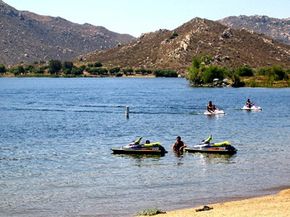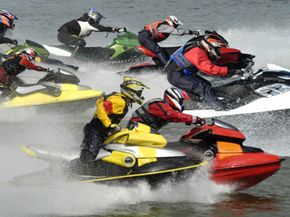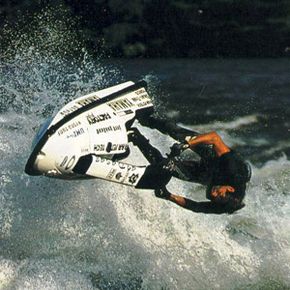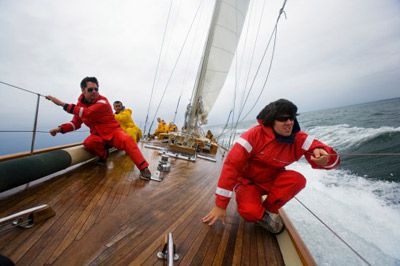In 1989, the Exxon Valdez oil tanker ran aground in Alaska, resulting in one of the biggest environmental disasters in history. The tanker spilled nearly 11 million gallons (almost 42 million liters) of oil and gas into Prince William Sound, devastating wildlife and ecosystems [source: EOE]. If you multiply that number by 15, you get the amount of oil and gas dumped into bodies of water each year by personal watercraft [source: CO Parks].
Personal watercraft, also known by the brand names Jet Ski, WaveRunner and Sea-Doo, are pretty much what they sound like: single (or sometimes double) occupancy boats. But instead of sitting inside them, you stand or sit on top of them while you drive around on the water at up to 65 miles per hour [source: BWN]. The craft are banned in most state parks, and other recreation areas have strict regulations regarding their use -- regulations not applied to other types of watercraft.
Advertisement
The special rules for personal watercraft, or PWC, mostly have to do with the excessive fuel dumping that has been polluting lakes and waterways for decades. Environmental organizations, supported by a large percentage of the public, have sued government agencies for not limiting PWC use on public lands -- and they've won.
The confusing thing is, boats dump similar amounts of fuel. So why just restrict PWC? Why all the lawsuits and public outrage directed at PWC instead of all motorized watercraft?
In this article, we'll look at the particular environmental issues surrounding personal watercraft, and we'll find out if they're really doing as much damage as many people believe. We'll also find out what's being done about the problem, both by recreation areas and by PWC manufacturers.
Advertisement



